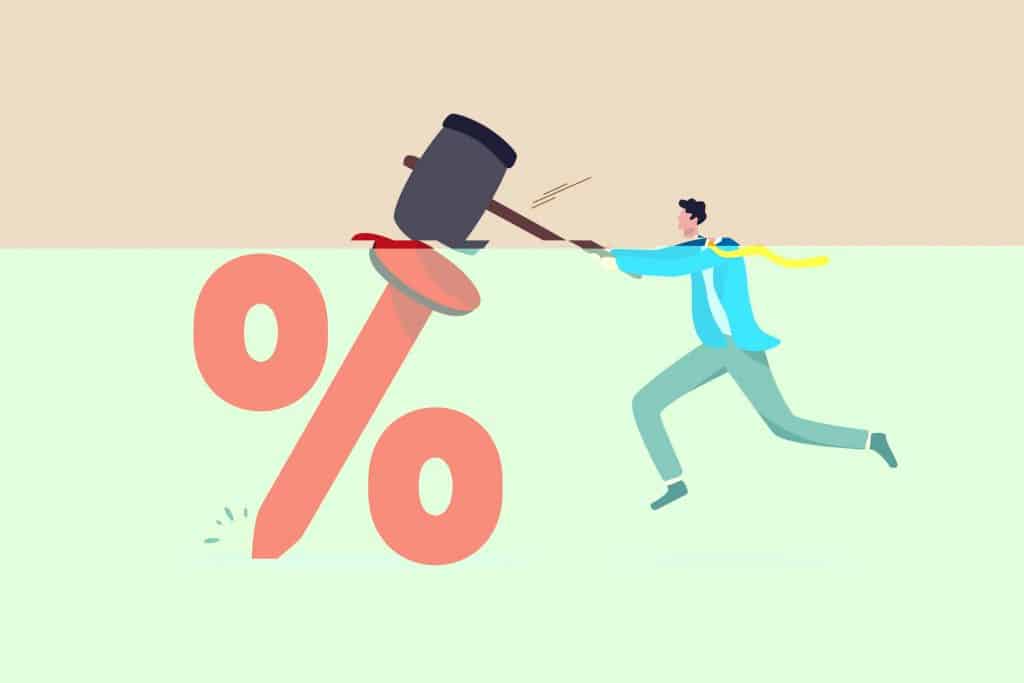Understand what interchange rates are, why they’re rising, and what your business can do to fight higher fees.
The numbers don’t lie: inflation is at a 40 year high and has increased 7.9% in just one year.
Both consumers and business owners have been feeling higher prices everywhere–including fees for credit card processing.
Why, though, is this happening with processing credit card payments?
It actually comes down to an increase in Interchange Rates.
Find out what Interchange Rates are, why they’re increasing, and most importantly what your business can do about it.
What are Interchange Rates?
In order for a credit card transaction to successfully take place, information needs to be securely sent to a network of parties. As you may have learned in our article ‘How does Credit Card Processing Work?’, two of these parties are the Acquiring Bank and Issuing Bank.
The Acquiring Bank is the bank of the merchant, while the Issuing Bank is the bank of the cardholder. These two parties send transaction information to one another every time a credit card purchase is made via credit card associations (such as Visa and MasterCard).
These credit card associations charge a transfer fee for passing on this information between these acquiring and issuing banks. Thus, it is called an Interchange Fee, also known as an Interchange Rate, since it costs money for the interchange of information.
Why are Interchange Rates rising?
The Interchange Rate charged by the credit card associations isn’t a fixed fee. Rather, it can vary, and has typically been adjusted in the spring and autumn of the year. These adjustments are to accommodate changing interest rates and market conditions.
However, the COVID-19 Pandemic has temporarily paused this. An adjustment to the Interchange Rate was planned back in 2020 and was slated for April of 2021. However, this planned increase was delayed due to many retailers recognizing consumers were still reliant on online shopping since vaccines hadn’t yet rolled out. Thus, the increase was supposed to be pushed back until April 2022.
This, though, was a bit of misdirection on the part of the credit card associations. Both Visa and MasterCard actually did make several increases to interchange fees in April of 2021–most notably an increase in CNP, or “card not present” transactions.
As market and economic conditions continue to change, so too will interchange fees. This change will take place in April 2022, according to the Wall Street Journal. This time, the fee increase is to cover costs connected to both innovation (such as touchless payments) and to cover costs related to fraud-prevention measures.
Who does this affect?
These fees are not seen by the consumer. Rather, they are passed on to the merchant (the business accepting the credit card). This happens in a series of trickle-down steps with an Interchange Plus pricing structure.
First, the credit card association charges for handling the transaction between the customer and merchant banks, which is the Interchange Fee. They hand this fee down to the payment processor, since they are a go-between between a number of different parties.
From there, the payment processor adds on a slight fee for their services to the merchant–this is the “Plus” in Interchange Plus pricing structures. Thus, the final fee the merchant sees is the Interchange Fee along with the payment processor’s fee.
Because of this, any change in Interchange Rates ultimately affects the merchants the most. In other words, if your business accepts credit cards, there’s a very good chance you will be paying more after this April 2022 change.
How much will the Interchange Rate increase?
While it’s not yet official, Bloomberg has examined early data from Visa and Mastercard and has reported that Interchange Rates will increase by .5 percent.
That means that a traditional Visa charge of $100 would now be $1.99 instead of $1.90. However, keep in mind that this is not a flat fee across all businesses–rather, some processors may increase their prices even more than others.
That means every business will end up paying a different amount, since it is the payment processor that not only bills them for accepting credit cards, but also adds on their fee for processing.
What can my business do about it?
Since these are major credit card associations who have decided to raise these Interchange Rates, there isn’t anything that can be done about them. But there is something you can do about what you pay your processors.
As mentioned earlier, the credit card processors themselves also add a fee for their services on top of the Interchange Fee. This fee is not set by any major entity; rather, it’s the decision of the credit card processor themselves.
That’s why a business does well to look at how much they’re paying beyond just the Interchange Fee. Again, the “Plus” part of Interchange Plus refers to how much the payment processor chooses to charge the merchant.
So here’s what businesses can do about any changes that come their way this April: Try and negotiate a lower fee with payment processors.
If their processors don’t want to budge on their pricing, it may be time to find a different processor. When that time comes, check out our guide on what to avoid in a credit card processing contract.
Summary
Interchange Rate increases aren’t new; rather, they usually change at least once a year depending on market conditions. However, it’s important to negotiate with your payment processor in order to get the lowest rate possible on Interchange Plus pricing.
Progressive Payment Solutions offers the very lowest rates for processing credit cards. Not only that, we provide what others don’t: the customer service and guidance every business owner needs to make running their business easier and more profitable.
Contact us today to get the lowest rates with the best service.
